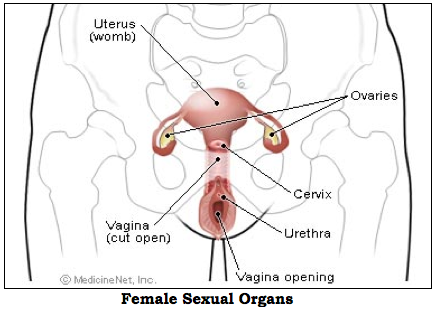Let’s Talk!
You know that cigarette smoking is very damaging to your health. Since the early 1960’s there has been an incalculable number of scientific studies indicating a causal link between tobacco and many diseases. The development of lung, mouth, bladder, kidney and pancreatic cancer, heart attacks, strokes…etc can often be traced back to smoking. Even with all this proof, a recent survey estimates that 18% of Canadians smoke. Since the early 20th century, tobacco use by women of the Western world has greatly increased to almost the same level as men’s.
Within the young female Canadian population, those aged 20-24 tend to smoke the most (25.6%). This is of great concern because women tend to be more vulnerable to cigarette smoking than men. Our sexual organs, hormones, and body size make us prime victims of tobacco. The number one killer in North America for both sexes is cardiovascular disease, and more than 90% of these deaths can be directly attributed to cigarette smoking.
But where does nicotine come from? And why is tobacco smoking so addictive?
Nicotine is an alkaloid made in the roots of the nightshade family of plants (Solanaceae) and accumulates in the leaves (See diagram below). The word “Nicotine” is named after French ambassador Jean Nicot de Villemain who introduced tobacco to France in 1560.
The active ingredient in tobacco is nicotine. A cigarette (meaning small cigar in French) contains about 1 mg of nicotine, cured, finely cut tobacco, and reconstituted tobacco. Other substances are also added to this mixture to increase its addictive potency, change the pH, make it burn faster, and enhance the flavour. There are 4,000 chemicals in tobacco of which 43 are known carcinogens (i.e., formaldehyde, benzene, cadmium, nitric oxide…etc). There is some evidence that since the late 1990’s the nicotine content of most cigarettes has been increased by 1.6% per year to make tobacco more addictive.
When a cigarette is lit, the smoker inhales the vaporized gas deep into his/her lungs. Nicotine enters the body through the lung alveoli (numbered at about 300 million) and is delivered straight into the bloodstream. It only takes about 7-10 seconds for nicotine to reach the brain. There is an almost immediate chemical reaction in the nerve endings, and the smoker experiences increased heart rate, better memory, more alertness, better concentration, appetite suppression, and faster reaction time. A few minutes later, dopamine and endorphins are released in the brain and the person experiences a functional high.
Nicotine is only less addictive than crack-cocaine. The long-term smoker has billions of more receptor sites for nicotine in his/her brain, thereby increasing cravings for tobacco. A smoker’s nicotine dose can be adjusted to be a stimulant (short quick puffs) or a relaxant (long deep puffs).
The ritual of cigarette smoking is often part of a stress “management” regime. The person removes him/herself from the stressful situation by going outside, the focus is on the cigarette, the breathing pattern is slower and it takes about 7-10 minutes to smoke a cigarette. Smoking in a group gives the opportunity to voice repressed negative feelings, and a chance to bond with other people. By asking a person to quit smoking, you may be removing his/her most reliable form of stress relief.
Women who consume tobacco may damage their sexual organs (see diagram below). If a woman is infected with a high-risk Human Papillomavirus, she is at an increased risk of developing cervical cancer. Tobacco by-products have been found in the cervical mucus of women who smoke, which makes it toxic to sperm.
Tobacco negatively affects the ovaries, and less estrogen is released during the menstrual cycle. The periods tend to be shorter, more irregular, and fewer eggs are released. Premenstrual symptoms are often more pronounced, which in turn may promote cigarette cravings. The fluctuation of hormones during the menstrual cycle makes it more difficult for women to quit smoking. Women smokers tend to have early menopause, making them more prone to osteoporosis.
Breast cancer is the second leading cause of death of Canadian women. Breast tissue is particularly vulnerable to carcinogens from pre-puberty (i.e, 10 years old) up to the age of first full-term pregnancy. The rapid cell division during that period is a major risk factor for this type of cancer. Breasts are part of the blood and lymph systems, and tobacco’s toxic additives quickly accumulate in them. If a woman smoker breastfeeds her baby, some of the tobacco by-products will be ingested by her baby.
Tobacco can inhibit the production of one of the thyroid hormones, and this effect can lower fertility. It may take up to 1 year for women smokers to become pregnant. They are at increased risks of miscarriages, premature births, and low baby birth weight. Also, their babies have a higher incidence of death and developmental problems.
We are all aware of the negative effects of cigarette smoking, yet everyday people around the world consume this product. We have to realize that when it comes to human beings, it is very difficult to stop addictive behavior.
As a non-smoker, I can only say “Thank you for NOT smoking”.
Literary Truths
Here are ways to help someone quit smoking:
- Avoid nagging: the person already knows that smoking is an unhealthy habit, and lecturing may create resistance.
- Support any small progress: even if the person smokes fewer cigarettes, it is a step in the right direction.
- Have faith in them: it takes on average (9) attempts to quit smoking. A failed attempt does not mean that the person is incapable of giving up tobacco.
- Do not offer cigarettes: even if the person becomes cranky because of the craving for tobacco, offering cigarettes may trigger a relapse.
- Give the right kind of support: everybody is different. Ask the person what kind of support is needed (i.e., talking, walking…etc) to help them through the tobacco cravings.
If you are trying to stop smoking:
- Set a quit date: it will give you time to mentally and emotionally prepare yourself for quitting smoking.
- Have a support system: ask the help of friends and family members. This is critical when you are feeling discouraged.
- Get rid of all tobacco products: do not keep a few cigarettes in your proximity because you may not be able to resist smoking them.
- Identify your triggers: do you smoke when you drink coffee or alcohol? Make sure you stay away from these triggers.
- Drink plenty of water: it will help detoxify your body of the tobacco toxins accumulated over time.
- Keep your mouth and hands busy: you may need to carry low-calorie snacks (i.e., popcorn) to keep your mouth occupied.
- Exercise: physical activity will help with stress management by stimulating the release of endorphins. Also, it will help prevent potential weight gain when you stop smoking.
- Reward yourself: you should celebrate any step in the right direction.
Truth in Motion
References
Benowitz, N. Nicotine Addiction. Tobacco Use and Cessation, 26(3): 611-631, 1999.
Bertone-Johnson, E., Hankinson S. E., Johnson S. R. & Manson J., E. American journal of
epidemiology, Cigarette Smoking and the Development of Premenstrual Syndrome, vol. 168(8):938-945, 2008.
Canadian Children’s Rights Council
Health – Smoking
Modeling The Relation Of Smoking To The Ovarian Function
Smoking & Cancer Survivorship – The Importance of Quitting
Smoking Creates Major Health Concerns For Women
Soldin, Offie P., Bethany E. Goughenour, Sappho Z. Gilbert, Helain J. Landy, and Steven J. Soldin. Thyroid hormone levels associated with active and passive cigarette smoking. (ORIGINAL STUDIES, REVIEWS, AND SCHOLARLY DIALOG).” Thyroid.19.8 (August 2009): 817(7).
Statistics Canada: Canadian Tobacco Use Monitoring Survey
Windham, G. C., Elkin, E. P., Swan, S. H., Waller, K. O. & Fenster, L. Obstetrics & Gynecology, Cigarette Smoking and Effects On Menstrual Function, vol. 93(1):59-65, Jan. 1999.
Women And Tobacco
Young, Erin, Scott Leatherdale, Margaret Sloan, Nancy Kreiger, and Andriana Barisic. “Age of smoking initiation and risk of breast cancer in a sample of Ontario women. (Research)(Report). ” Tobacco Induced Diseases. 5.4 (Feb 17, 2009): 4.


Thanks for taking the time to post such a detailed and informative article. It has given me a lot of inspiration, and I look forward to more like this in the future.
Great design!!!! What theme did you use?
Lots of love
xChanellex
Yes, I think the theme designer did a good job. The theme is “Mondo Zen” by Catarina Yamamoto.
Best regards,
J.M.
I see a lot of interesting articles here. Bookmarked for future referrence.
Great site. A lot of useful information here. I’m sending it to some friends!
Hey,
Just cruising the web and located your post. I had to read the entire post. Usually it’s hard to keep my attention for that long, but you definitely did it. TY!
Hello. I would like to congratulate you on making such a great blog. I found your information very interesting and useful. I will be revisiting your site. Thanks.